Media | Articles
In the Oldsmobile Cutlass, Rocket-powered muscle collided with Malaise engineering
The early 1970s was a tough time for Detroit automakers. Amid the demise of the muscle car and the fuel crisis, glimmers of future brilliance shone through. There were major advancements in the areas of plastics engineering, computer-assisted design, and an increased usage of aluminum. Catalytic converters and other emission technology vastly improved urban air quality. Was 1973 the beginning of the end for American performance? Maybe, but the realities of the world forced car companies to think in new ways.
Emissions and safety ruled the roost in ’73, and we should be clear that the effects were disquieting. Bigger bumpers added weight in the wrong place (i.e. more mass at the end of the nose hurts handling), and emissions restrictions sapped engines of power output. It would take a decade for the benefits of new technology to enter the market (looking at you, 1982 Mustang GT) but there was a lot of simmering potential. Much of it appeared in the Oldsmobile Cutlass.
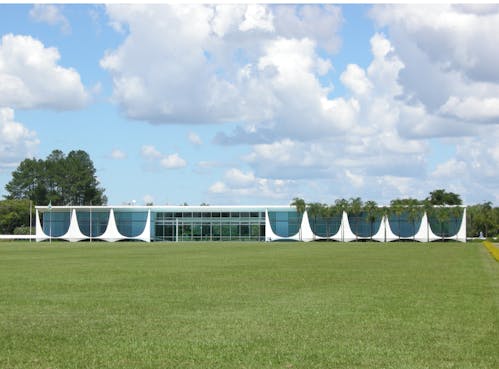
GM’s A-body platform and its various sedans, wagons, and “Colonnade” coupes (like the Cutlass) were extremely innovative. Colonnade is an architectural term referring to a series of pillars connecting a sleek roof, placed in harmony and providing a dramatic effect that couldn’t be replicated otherwise. General Motors had previously designed cars with A-, B-, and C-pillars (or sometimes a hardtop with no B-pillar), but the 1973 Colonnade cars employed just an A and a B. The big innovation was the revival of the classic Opera Window, albeit in newly radical form. The Colonnade cars were, after all, rather theatrical in the realm of hardtop styling.
The Cutlass’ styling creativity didn’t end there, as the mandated larger bumpers were cleverly finessed into the body. It was one of a few vehicles of the era with a spring-loaded grille, saving itself from a hydraulically-assisted front bumper, and for 1973 it boasted a pair of them. Note how designers wrapped them both down over the front fascia to continue the hood’s long lines. Details like this support the thesis that GM design superiority in this era remained in full force—all the more impressive given that it was the Feds dictating many of their changes.
If they had to be bigger and heavier, at least the styling could be bolder. GM designers got more comfortable with attention-seeking looks, leaning into the national discotheque that was the 1970s. Ford’s 1973 Torino/Montego twins would have killed for such an impressive upgrade, as their legally-mandated implementation was downright dowdy.
Marketplace
Buy and sell classics with confidence
Changes under the skin make the Colonnade cars appealing, too. The most appealing of all 1973 Cutlass Colonnades was the Olds 4-4-2 and the Hurst/Olds. While more of a grand tourer compared to predecessor versions, these souped-up Cutlasses sported a handling package, unique trim, and a few engine choices: a 350-cu-in V-8 and a pair of 455-cu-in big blocks with either 250 or 270 (SAE net) horsepower. The latter was available with a four-speed manual, and it was the last year of a stick shift Hurst model. (The 4-4-2 came with downright revolutionary five-speed manual just four years later.)

Here’s where I’ll point out that the A-body benefitted from some serious Malaise-Era modernization. The implementation of steel-belted radial tires for higher-trim Colonnade coupes demanded significant refinements to the platform’s suspension design, which had long-reaching consequences in the GM lineup. Even better, all A-bodies for 1973 have suspension component interchangeability with the highly regarded B-body that came out in ’77, which makes them an underrated delight for modern hot-rodders. So yes, a ’73 Cutlass can take full advantage of the same aftermarket/OEM-plus upgrades available as the 9C1 Caprice and 1994–96 Impala SS.
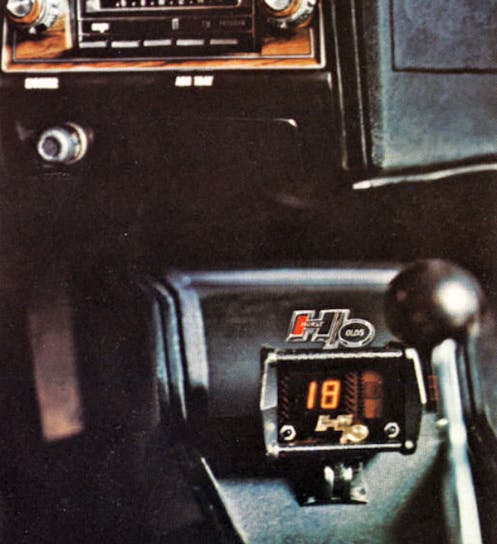
One of the coolest tricks available for 1973 was the Hurst/Old’s optional digital tachometer. Unless you worked at NASA, computerized displays in your console were beyond rare in the early 1970s, not becoming an optional feature in Lincolns (Continental Mark V fuel computer) and Cadillacs (Seville trip computer) until the latter part of the decade. Hurst’s implementation measures engine revolutions in hundreds of rpm, providing granular data that will likely appeal to the most fanatical engine tuners of the time.
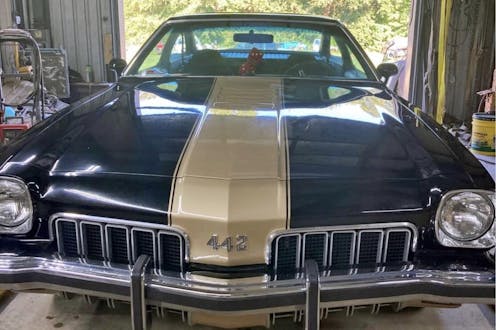
The W-30 model soldiered on for 1973, but thanks to ever-tightening emissions controls, it faded into more of a trim package. If the aesthetics still do it for you, then check out the W-30 1973 Olds 4-4-2 we found posted on Hagerty Marketplace. It’s finished in black and gold and sporting a Hurst automatic shifter to add more appeal to an already rare ride from GM’s rocket brand. (No, it isn’t a Hurst/Olds as it lacks those specific cosmetic upgrades.) The only thing more appealing would be an example with the 4-speed manual, but some of us prefer an automatic anyway.

This particular example comes with the cloth seats (which swivel for easier entry/exit), and looks to present the upgraded Cutlass “S” interior trim surrounding the Hurst-equipped goodness. The seller states this example has a pop-up roof, cold A/C, and it runs strong. The $21,500 asking price may raise some eyebrows, but that’s in line with our prices in our valuation tool for a similarly-equipped Cutlass Supreme in #2 (excellent) condition.
For anyone who enjoys a good Olds, an obscure example of the breed like this is pretty special. Hopefully, if you didn’t already, you have as much appreciation for the engineering and design efforts of this era as we do. With the 1973 Cutlass, 4-4-2 (and the Hurst/Olds), GM truly made a sweet, sweet lemonade from bitter lemons.



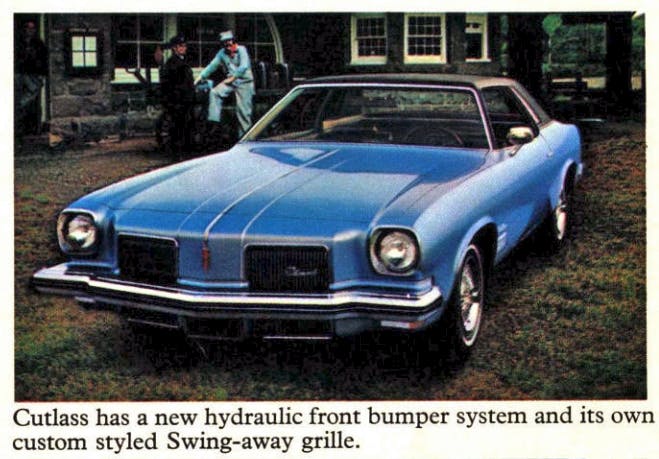




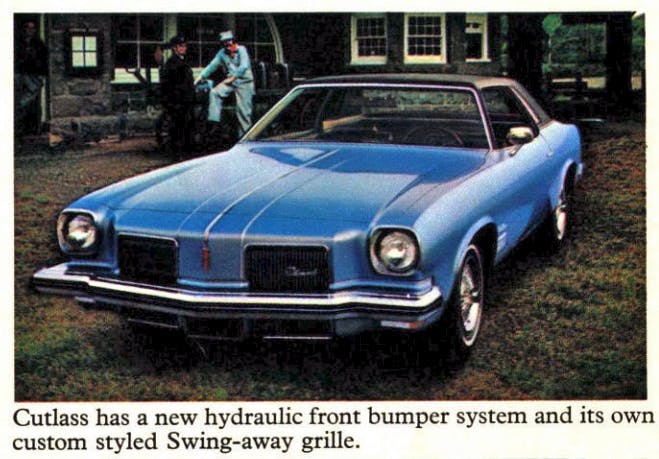






These “Colonade” styled coupes were a design innovation though there four door siblings were not nearly as attractive. The lack of a C pillar and a retractable rear seat window gave way to GM’s next gen mid size cars where even the four door models’ rear windows wouldn’t open. The Malaise era also was defined by cost cutting especially as the 70’s came to an end with high inflation.
I love it, wife won’t let me buy it!
My first car was a ’73 Cutlass Supreme with the 350 Rocket. We got a decent deal on it as it needed a new transmissions. When we took it to the shop, the mechanic said, “73 was the last year these weren’t rust buckets due to changes in the paint they made for emissions”. I don’t know if that was true, but after someone hit it while it was parked, the payout was higher than what we paid. Found a tail light at the wrecking yard and ran it for another bit before totaling it myself. As a 17 year old I was less than enthusiastic about the styling at first but grew to love how it cruised down the highway and could still blow the doors off of most other cars from the 80’s.
Lots of good comments here. I had a lot of experience with these cars! First, a 76 Buick Regal with a 350, 2bbl, and later a ’73 Cutlass Supreme with the 350 Rocket 4bbl. The Buick was an awesome car for me being in college at the time- bucket seats, consol shifter, sport 3 spoke steering wheel, chrome rallys and a buckskin padded vinyl landau. Kinda an ‘S/R’ package without the 4bbl. Much of that stuff dated back to the 70 GS days. It was slower an all, barely had a passing gear. Might spin a tire. Like the article says, I had the cat cut off and a form of dual exhaust with turbo mufflers put on it, and at least it sounded pretty good. The Cutlass was a bit of a beater with bench seats, but would still open up the secondaries. I traded out the chrome spoke hub caps for some enamel rally wheels to spiff it up a bit. It had some rust of course by then, but living in NC helps a lot from that coming along too quickly. The 76 Cutlass was better looking and better running than my Regal, but they were decent cars. I wish there was some more resto parts out there for the few that might still survive. A better running engine would do wonders!
I drove my buddies Cutlass back in the days of Disco with the 350 Rocket 4V and body color really wheels. Wow, the car was fast on the highway and liked to rev! Miss that car and those days. The only thing wrong with the 70’s was that it came to an end!
I own a 73 Hurst/Olds . 1 of 10 with factory sunroof, 63 of 1095 . This car rides like a Cadillac, but she can hold her own in the hills. Wider tires helped with cool overs. Numbers matching, only mods are what you can’t see . Engine was treated to a boring .060 over, rechamford oil channels , steel crank , new intake and a 770 carb, elec ignition , long tube headers , put Ga heads in her, now I’m about 450 hp . Every time she goes out, I spend more time answering questions than driving . Lol. I wouldn’t trade it for the world. My 10 yr old is going to be the new owner in 6 yrs.